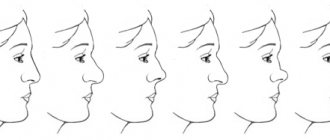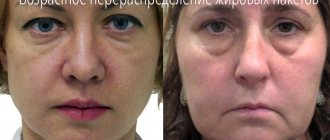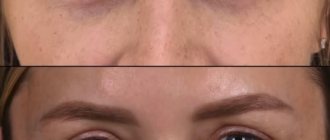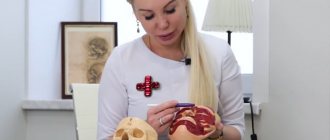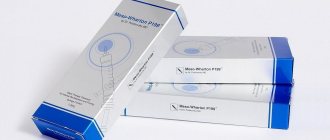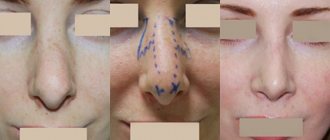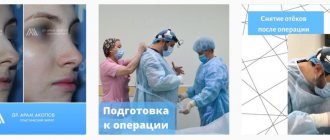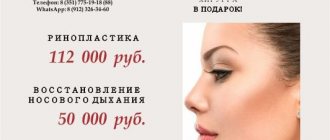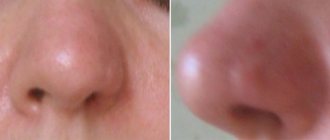The purpose of revision rhinoplasty is to further correct the nose of the first intervention. The need for it arises in 10-20% of cases. Not all of them are caused by a surgeon’s error. Sometimes the operation is planned in advance in two or more stages, for example, in case of complex injuries.
Another reason is the patient’s dissatisfaction with the result obtained. Minor defects arise during the rehabilitation process if the doctor’s recommendations are not followed, or due to the individual characteristics of the body.
When is revision rhinoplasty necessary?
- Difficulty in nasal breathing;
- Drooping of the tip of the nose;
- Deviation of the nasal septum;
- Unaesthetic shape of the wings of the nose;
- Dips, humps and other deformations of the back of the nose;
- Pronounced asymmetry;
- Headache;
- Scars and scars at the site of a previous operation.
After the first rhinoplasty, at least 1 year must pass. Only after this period can the final results of the operation be assessed: all tissues take “their place,” blood circulation is restored, and scars are formed.
Rhinoplasty (photo from the archive) - photo
How is secondary rhinoplasty performed?
Technically, re-intervention is more complicated than the primary one. It may be hampered by scars that occurred after the first operation, or by a lack of tissue that was previously resected.
The operation is performed open or closed:
Open revision surgery
It is used for serious disorders, when the surgeon needs to see the entire surgical field and act on the deep structures of the nose. Access is through external incisions along the lower part of the nasal septum.
Closed secondary rhinoplasty
Allows you to eliminate small defects and has a shorter recovery period. Incisions are made on the inside of the nasal passages. Therefore, the method allows you to do without external scars and scars. But during revision rhinoplasty, it is rarely used, since it is difficult to visualize the osteochondral structures.
Reconstructive plastic surgery
Reconstructive operations occupy an important place in secondary rhinoplasty. It happens that there is a need to restore (partially or completely) the volume lost after the first rhinoplasty. For this purpose, cartilage grafts are used (pieces of cartilage from the nasal septum, auricle or rib). After primary rhinoplasty, loss of most of the septal cartilage occurs. Absence of septal cartilage is the most common indication for rib or auricular graft harvesting. The plastic surgeon shapes the grafts specifically for use in the nasal area.
Surgeons who have been involved in rhinoplasty for a long time never tire of reminding that the ideal shape of the nose for everyone is limited by individual anatomical features. Therefore, the form will not always correspond to your dream 100%. However, the doctor will do everything to achieve maximum aesthetics and functionality from the shape of the nose.
Despite the technical complexity of revision rhinoplasty, a professional plastic surgeon will help you get rid of defects and complications from previous operations. Thanks to the procedure, you will never again need to think about the disappointments or problems you may have encountered after your first rhinoplasty.
Recovery after secondary rhinoplasty of the nose
Swelling and hematomas are observed for 2-3 weeks. The stitches are removed after 7-10 days. You will be able to evaluate the final result of plastic surgery after 6-12 months. In order for rehabilitation to proceed without complications, you need to adhere to a number of rules:
- Avoid alcohol and smoking: their toxic components interfere with tissue regeneration.
- For 1 month, do not engage in sports and avoid heavy exercise.
- Sleep exclusively on your back, raising the head edge of the bed higher.
- Protect your skin from the sun with special cosmetics and hats.
Respiratory illnesses complicate recovery after revision rhinoplasty, so during cold season, avoid crowded places and get a flu shot.
Difficulties in carrying out
Revision surgery is a very complex process. Before performing it, the doctor needs to conduct a thorough examination of the patient, find out a detailed history of his previous operations: the reasons for undergoing rhinoplasty, the period that has passed since it, and living conditions during the rehabilitation period.
Sometimes patients do not tell the truth when examined by a surgeon. The result of the first surgical procedure can be so terrible that there is no desire to wait another year for the rehabilitation period. You should not do this, since during the recovery period the nose can repeatedly change its shape and become the way you would like it to be.
Why can our articles be trusted?
We make health information clear, accessible and relevant.
- All articles are checked by practicing doctors.
- We take scientific literature and the latest research as a basis.
- We publish detailed articles that answer all questions.
After consultation with the patient, the surgeon may prescribe the necessary procedures, for example:
- general blood analysis;
- Analysis of urine;
- blood test for rw;
- coaguloramma;
- radiography , etc.
Often, your doctor may need before and after photographs of your initial nose surgery. This way he can accurately imagine the problem and come up with ways to solve it.
Once the doctor is fully aware of the patient’s medical history and has all the necessary tests and documentation in hand, he can proceed to choosing a surgical correction technique. The doctor makes the choice together with the patient, informing him about the features of each method.
There are a number of factors that can significantly affect the level of complexity of the operation:
- deviated nasal septum;
- mechanical damage to the nose;
- level of mobility of nasal tissues;
- elasticity of the nose;
- density ;
- scar changes;
- deformation of subcutaneous tissues;
- insufficient amount of cartilage tissue (in this case, auricular cartilage is often used without damaging their appearance).
Consequences of rhinoplasty
Despite the popularity of rhinoplasty, its consequences can be very serious and may not appear immediately.
Sometimes, after a complete examination of the patient, the doctor may come to the conclusion that performing secondary rhinoplasty will lead to a health risk. He has the right to refuse to perform the operation. In this case, the patient should accept the results of the initial surgical intervention and not look for other doctors.
Due to previous unsuccessful nasal surgery, the choice of techniques may be somewhat limited. After it, the structure of the nasal tissue changes, an insufficient amount of cartilage tissue is formed, and internal and external scar changes in the skin appear. Such features largely hinder new rhinoplasty.
There are two methods of performing secondary rhinoplasty, which are practically no different from the basic techniques of primary rhinoplasty. This is an open and closed method. As a rule, the closed method requires high skill and precision from the surgeon, which is why doctors often prefer to go with the open method.
With the open method, the doctor can make incisions both outside the nose and on the mucous membrane. Revision rhinoplasty performed using the open technique allows:
- Carefully analyze the general condition of the nose and its frame, identify imperfections and find ways to eliminate them.
- Perform the operation more freely , with a wider view of the surgical field.
- Operate the patient without the need for additional mechanical expansion of the surgical field.
- Change the structure tissues more deeply.
Closed revision nasal surgery is performed if the patient needs minor changes. Thanks to this technique, the operation and rehabilitation period take a relatively short period of time, and the final result looks more aesthetically pleasing.
Any type of secondary rhinoplasty is performed under anesthesia, and its duration depends on the amount of work required.
Even if the second rhinoplasty is successful, complications may arise during the rehabilitation period. Due to the fact that the nasal organs are under stress, they can react to changes with inflammatory processes, pain, bleeding and swelling. To reduce the risk of such complications, the doctor introduces the patient to the rules for the recovery period:
- sleep on your back;
- temporarily avoid intense physical activity on the body;
- do not be exposed to direct sunlight , and do not visit the solarium;
- refuse salon facial cosmetic
- stop consuming foods that stimulate fluid retention in the body (alcoholic drinks, coffee and its derivatives, tobacco products, electronic cigarettes, salt and foods with a high content of it);
- stop wearing glasses for vision correction and sunglasses;
- avoid mechanical damage to the nose;
- protect your health from colds.
Cost of secondary rhinoplasty
Hurry up to take advantage of our advantageous offer for revision rhinoplasty - from RUB 179,400. depending on the complexity of the operation.
You will find out the exact cost at a free consultation with a plastic surgeon, when he will assess the extent of the intervention in your case. Our prices are among the most affordable in Moscow. In addition, you can pay for our services in installments up to 24 months. No interest or overpayments!
Attention! All aesthetic plastic surgeries and most cosmetic procedures are strictly contraindicated for pregnant and lactating women. We also do not perform surgical interventions on people whose weight exceeds 110 kg.
Nose correction
Sometimes repeated rhinoplasty is performed intentionally and planned. For example, if the patient has a “complicated” nose and a large amount of surgical intervention is required. Then rhinoplasty takes place in 2 stages, with a large period of time between them required to restore the nasal structures.
It is also important not to confuse revision rhinoplasty with correction of primary rhinoplasty. Correction is often an outpatient “tweaking” of the nose. During it, minor imperfections are corrected, and the nose is brought to perfection by the same surgeon.
Contraindications
- Pregnancy and lactation.
- Any malignant neoplasm, regardless of where the tumor is located.
- Bleeding disorders caused by medications or congenital.
- Severe somatic pathologies in the stage of decompensation and exacerbation.
- Any infections in the body.
- Infections in the intended area of intervention.
- Endocrine diseases.
- Severe mental illness.
- Liver and/or kidney failure.
- Cardiovascular diseases, chronic heart failure.
